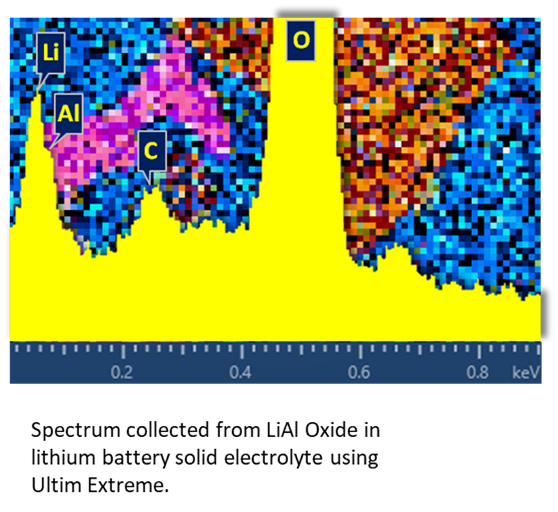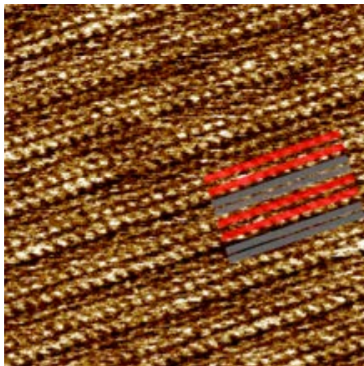新たなラマンイメージングの基準で、あらゆる方向へ研究を進めましょう
関連: 発電・蓄電
電池材料と燃料電池の分析
Currently produced Li ion batteries use a graphite based structure for the anode and a Li metaloxide layer for the cathode with a liquid electrolyte in between. However, in order to increase power densities and eliminate issues such as leakage next generation batteries are being developed using solid electrolytes and new anode and cathode materials.
A better understanding of the electrochemical processes and battery materials is desirable both from process control point of view as well as for understanding performance issues. As most of these processes take place on the micro and nanoscale, electron microscopy and atomic force microscopy based techniques are vital to enhance this understanding. With Ultim Extreme we offer the only EDS detector capable of detecting and mapping Li in an electron microscope which has opened up new avenue for research and quality control, especially for solid electrolyte materials. At the same time EBSD has developed into a viable technique to image the lithiation of LiFePO4 / FePO4 for battery electrodes.

We also provide solutions to image electrochemical processes directly by putting an AFM into a glove box. In-situ studies of oxidation-reduction reactions can be performed with an optional Electrochemical Cell which is available for the Cypher ES and MFP family AFMs.
AFM for Energy Storage and Battery Research
This enables the direct imaging of the Ionic electrical double layer (EDL) between the liquid electrolyte and the electrode, enabling a deeper understanding of the processes that limit battery capacity today. For the first time in situ AFM allowed the researchers to distinguish between cations and anions on the electrode surface, as well as determine their exact positions within the ionic liquid layer. The structure of the ion layer at room temperature turns out to be much different from that of frozen monolayers determined by UHV STM, showing that AFM may prove to be a critical technique in this field.

AFM Tapping mode phase images of the IL Stern layer adsorbed to a graphite (HOPG) substrate showing different layers and their mechanical stiffness, indicated by the red and grey bars. Reproduced with permission from A. Elbourne, S. McDonald, K. Voïchovsky, F. Endres, G.G. Warr,R. Atkin, ACS Nano 9, 7608-7620 (2015).
Defects within advanced batteries have been found to be a cause of dangerous self-ignition of consumer products. our x-ray sources are used in a number of tools to perform fast, accurate, image and composition analysis of such defects. This ensures quality to improve consumer safety.